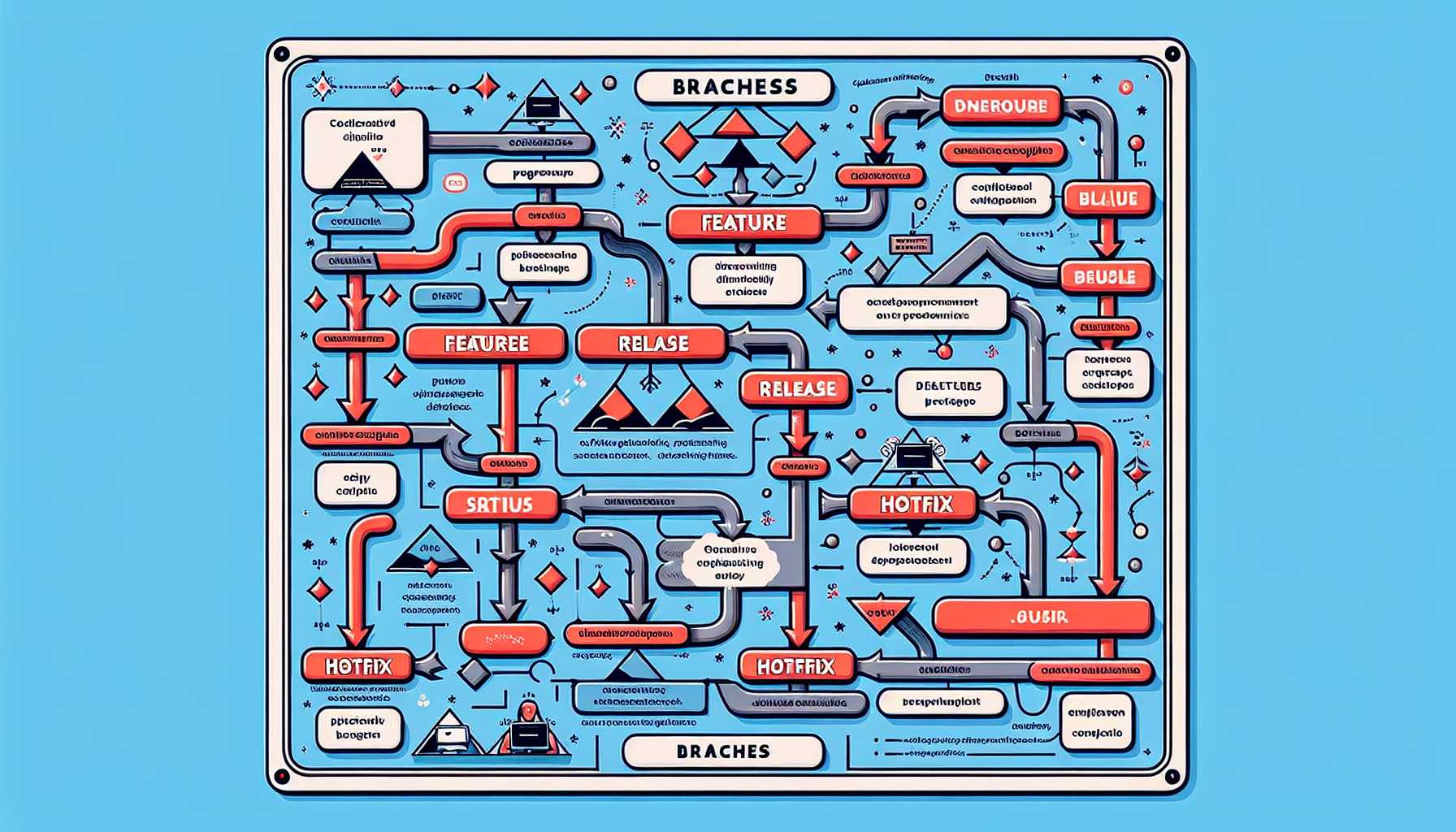Welcome to another deep dive into the art and science of product management. In this post, we tackle the intricate world of version control and branching strategies in a collaborative environment, where the right approach can mean the difference between a symphony and cacophony of code changes.

Version Control Systems: The Linchpin of Collaborative Development
Version control is the cornerstone of any successful development project. It enables collaboration, maintains a record of changes, and ensures that conflicting changes can be resolved. From my time leading a large-scale open-source project, I’ve seen how the right version control system can be a vital tool for coordinating a distributed team.
Choosing the Right Version Control Strategy
Understanding your team’s needs is crucial before adopting any version control strategy. In a past project, we migrated from a Centralized Version Control System (CVCS) to a Distributed Version Control System (DVCS) like Git. The decentralized nature of DVCS allowed our developers to work asynchronously, boosting productivity and flexibility.
Branching Strategies: The Architectural Blueprint
Branching is necessary for managing new features, fixes, and releases. However, poor branching strategies can lead to confusion and conflicts. I’ve navigated through multiple strategies and found the following most effective in various scenarios.
1. Git-Flow: A Structured, Yet Flexible Approach
Git-Flow is structured and prescribes specific branches for features, releases, and maintenance. This approach was a lifesaver during a project with rigid release cycles, allowing us to manage hotfixes efficiently without affecting ongoing work.
2. Feature Branch Workflow: Independence and Focus
Another strategy I favor is the Feature Branch Workflow. It allocates a dedicated branch for each feature, reducing disruptions to the main codebase. This strategy was especially useful when my team was rapidly experimenting with new ideas in a product’s early stages.
3. Forking Workflow: Open Source Projects
For open-source projects with external contributors, the Forking Workflow has proven indispensable. By dividing the repository, it gives external developers the freedom to propose changes without compromising the integrity of the official codebase.
4. Release Branching: For AI-Driven Continuous Deployment
In a high-stakes AI-driven product I led, we employed Release Branching, creating branches for production releases. This allowed us to deploy and roll back different versions quickly, catering to an environment where continuous deployment was critical.
Maintaining Clean History with Squash and Rebase
Maintaining a clean commit history facilitates easier code review and rollback. In my experience, ‘squash and rebase’ before merging into the main branch helps keep the history readable and bisectable—something that proved its worth during a particularly tricky regression investigation.
Continuous Integration: The Quality Gatekeeper
Enforcing a Continuous Integration (CI) process ensures that changes by developers don’t break the build. In one project, we automated tests for each commit, which was instrumental in catching issues early and maintaining high code quality.
Branch Ownership and Code Reviews
Encouraging branch ownership and thorough code reviews instills a sense of responsibility and promotes code quality. Pair programming and over-the-shoulder reviews played a key role in fostering collaboration and learning within the team.
Automating Processes
Automation is your ally. Automated builds, tests, and deploying scripts preempt manual errors and enable rapid delivery. I’ve led the implementation of bot-based automations, which not only increased efficiency but also team morale by eliminating monotonous tasks.
Documenting Your Version Control Approach
Clear documentation of your version control and branching approach is essential. Whether it was through wikis, internal blogs, or meetings, ensuring that everyone was on the same page with respect to procedures minimized missteps and saved countless hours of potential confusion and conflict resolution.
Establishing robust version control and branching practices is fundamental to the success of software projects. By sharing these insights and experiences, my hope is that you find the harmony in your coding concerto, leading to both efficient delivery and high-quality software.
